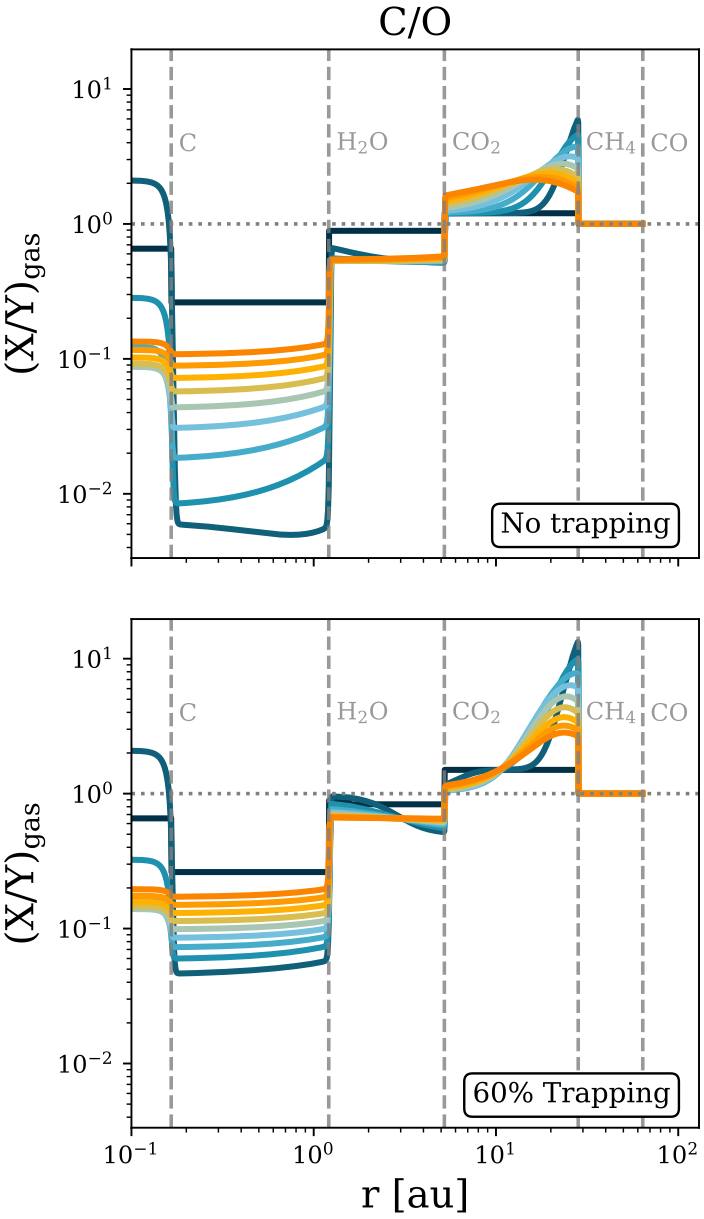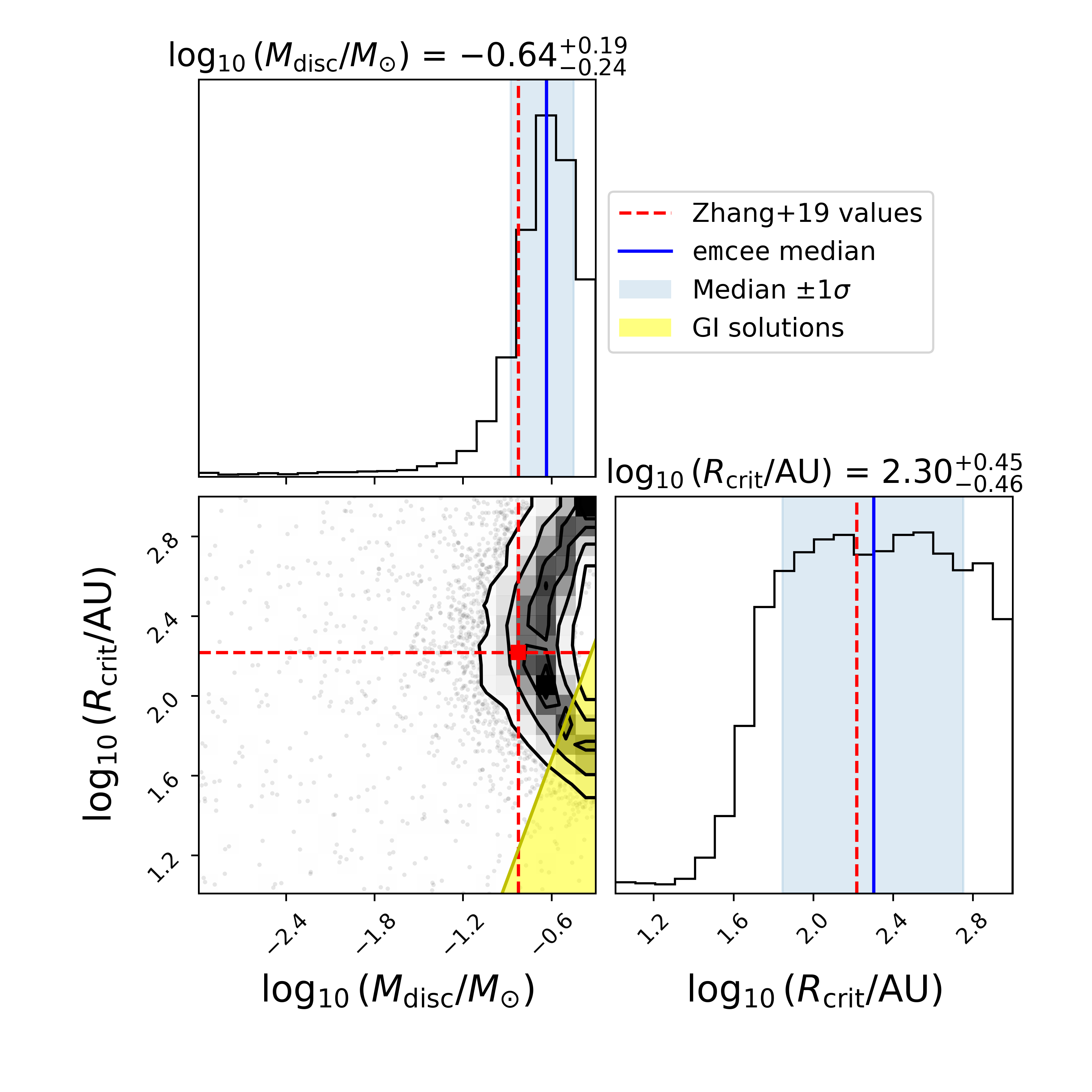My research focuses on the growth, drift, and sublimation of icy pebbles in protoplanetary discs that surround young stars.
I use 1D radial drift models such as

Models of icy pebble drift typically simulates all available CO ice as sublimating at 20K, although observational evidence from JWSTsuggests that ices are mixed - that is, some CO is locked inside water and CO2 ice.
We expand on work by Ligterink et al. 2024 to model CO trapped inside water ice in a dynamically evolving disc. We find that the carbon and oxygen ratios can be greatly modified, with up to a factor of 10 increase in the carbon content inside 1 au, providing a path to both carbon- and water-rich discs.
CO entrapment provides a different chemical environment for planets to form in, representing the necessity to consider entrapment in volatile evolution studies. Trapping other volatiles may make further dramatic changes.

Drifting pebbles sublimate their CO ice at the CO snowline (at T=20K), releasing vapour into the observable gas-phase. If you know how much CO gas there is, you can infer how much pebble mass you need to have delivered to the CO snowline - this is what Zhang et al. 2020 did did for the Herbig disc HD 163296.
By combining the code
We use our results to estimate the mass flux to the water snowline, where terrestrial planets may be forming, and compare these numbers to planet formation simulations to estimate planet formation outcomes.
Here are some papers on which I am a co-author.
| Paper Title | Author |
|---|---|
| Cosmic cascades: How disk substructure regulates the flow of water to inner planetary systems | Krijt & Banzatti et al. 2025 |
| Smuggling unnoticed: Towards a 2D view of water and dust delivery to the inner regions of protoplanetary discs | Houge et al. 2025 |
| The First JWST View of a 30-Myr-old Protoplanetary Disk Reveals a Late-stage Carbon-rich Phase | Long et al. 2025 |
Here are some successful telescope proposals I am involved in.
| Proposal Title | Principal Investigator |
|---|---|
| Population Study of Chemistry in the First Million Years of Planet Formation: A MIRI Survey of Embedded Disks in Ophiuchus | Ke Zhang |
| Do protoplanetary disk substructures regulate water enrichment and pebble drift across different environments? | Jane Huang |
| Linking the outer structure with inner chemistry in disks around the most common planet hosts | Feng Long |
| Can accretion explain the carbon dichotomy in planet-forming disks? | Maria Jose Colmenares Diaz |
